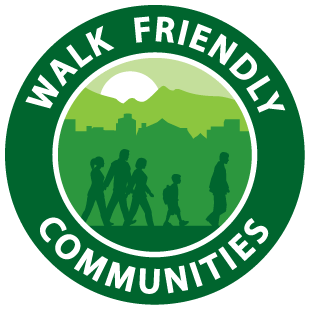Community Highlights
Bloomington is designated as a Bronze-level community due to its high walking mode share, great trail system, and ordinances that promote density and walkability. Highlights of Bloomington’s application include:
- In 2019, The City of Bloomington passed the newest version of the Transportation Plan, creating three new road typologies and requiring all Suburban Connector, Neighborhood Connector, General Urban, Main Streets and Shared Streets to construct sidewalks on both sides of the road.
- The City revisited and revised its Traffic Calming policies to integrate a data-driven process for identifying needs for traffic calming and deploying resources to implement these measures.
- Bloomington has nearly 50 miles of trails, with another 70 miles of trails planned. The B-Line Trail is a 3.2 mile trail that travels through the heart of the downtown business district, providing an unparalleled walking and biking connection for neighborhoods, businesses, schools, and workplaces. The trail also does a great job of incorporating public art. Bloomington’s bike/pedestrian/greenways plan addresses how current and planned trails can link up to sidewalks and bicycle facilities through the use of connector paths.
- The Unified Development Ordinance (UDO) for Bloomington provides images that help explain the different requirements in each zone, such as maximum block lengths or alley standards. The city also provides Green Development Incentives (GD) that promote affordability and sustainability. Developers may receive incentives (in the form of setback reductions, density bonuses, or fee waivers) if their project meets some combination of goals related to building efficiency, sustainable site design, affordable housing, or vehicle trip reduction (for GD, see page 42 of this PDF)
- Bloomington has sidewalk policies that support the creation of a community with pedestrian facilities on both sides of nearly every street. The city’s Sidewalk Committee meets once a year to re-prioritize projects and allocate funds.
- The city employs a full-time bicycle and pedestrian coordinator, who helps institutionalize the consideration of pedestrian accommodations and promote active transportatio

